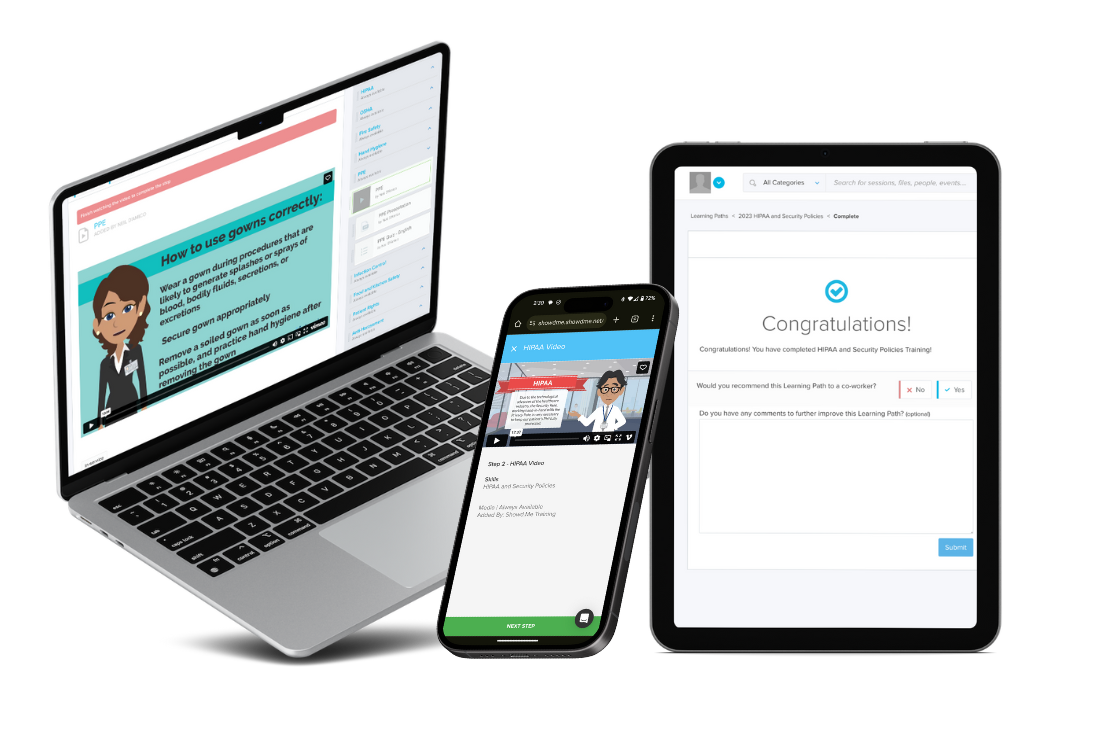Learning vs. Training
Post - Learning vs. Training
When it comes to professional development, the terms “learning” and “training” are often used interchangeably. However, there is a big difference between the two concepts.
This blog post will discuss the differences between learning and training.
Active vs. Passive
Learning is a process that happens naturally, through trial and error, or simply by observing others. On the other hand, training is a more formal process in which information is presented in a structured way and reinforcement is given for correct responses. Learning is generally more passive and unconscious, while training is more active and deliberate.
For example, if you are learning to use a new software program, you might try it out on your own and experiment with different features. If you need more help, you might look for online tutorials or ask a colleague for advice in order to get more training to be able to successfully use the software.
On the other hand, if you implement a new software and you are trained on how to use the software program, someone would likely walk you through the different features step-by-step and give you specific instructions on what to do. You could take notes during the training session so you could refer back to them in case you needed answers at a later point in time.
Knowledge vs. Skill
Anytime you learn something new, you are acquiring knowledge. This could be factual information, such as the capital of your country, or conceptual understanding, such as how photosynthesis works. Once you have this knowledge, it is stored in your memory, and you can recall it when needed.
Training, on the other hand, is about acquiring skills. Skills are things that you can do, such as ride a bike or play the piano. They are often physical or mechanical and require practice to perfect. Just like knowledge, once you have learned a skill, you can usually perform it without overthinking.
For example, if you are learning the names of different African countries, you are acquiring knowledge. However, if you are being trained to use a map or a GPS, you are acquiring a skill.
Learning and Training Serve Different Purposes
Learning is generally more open-ended and exploratory than training. It often occurs outside formal educational institutions and can occur throughout a person’s lifetime. Training, on the other hand, is usually more focused and specific. It often occurs within a formal educational setting and is often intended to prepare people for a particular job or role.
As a result, training is typically more structured and goal-oriented than learning.
How To Choose Between Learning and Training
There are circumstances where learning is more effective than training, and vice versa.
For example, if you want to learn to speak a new language, it will be much more effective to immerse yourself in the language by living in a country where it is spoken. This is because you will be constantly exposed to the language and will have plenty of opportunities to practice it.
On the other hand, if you want to learn how to use a new piece of software, it will probably be better to take a training course or watch some tutorial videos. This is because most software programs are designed to be learned through step-by-step instructions. In many instances, software companies release new features. As new features are released, consumers will need to be trained on how to use them. Again, one-on-one training sessions, training guides and tutorials will be required so you can successfully use the software.
How To Help Your Employees Learn
It’s crucial to ensure that your employees are actually learning and not just going through the motions.
One way to do this is to incorporate active learning exercises into your training sessions. Active learning requires employees to participate in the learning process instead of simply listening to a lecture or watching a presentation. By actively engaging with the material, employees are more likely to retain and put the information into practice.
There are many different ways to incorporate active learning into your training sessions. For example, you could use role-playing exercises, case studies, or group discussions.
It’s important to measure how much knowledge is retained. Training sessions should include quizzes to ensure the knowledge presented is understood and mastered.
Employee Training With showd.me
showd.me will create a customized training program to help your new hires and experienced employees learn everything they need to know in one place.
Our platform is easy to navigate so that employees can train at their own pace from any location or device.
Best of all, our programs can be translated into different languages so employees can study in their native language.
Let us handle the hard stuff for you. Request a demo today.

Let Us Show You More
See how showd.me's unique service-first approach helps hundreds of healthcare organizations ensure compliance. Request a demo today!

